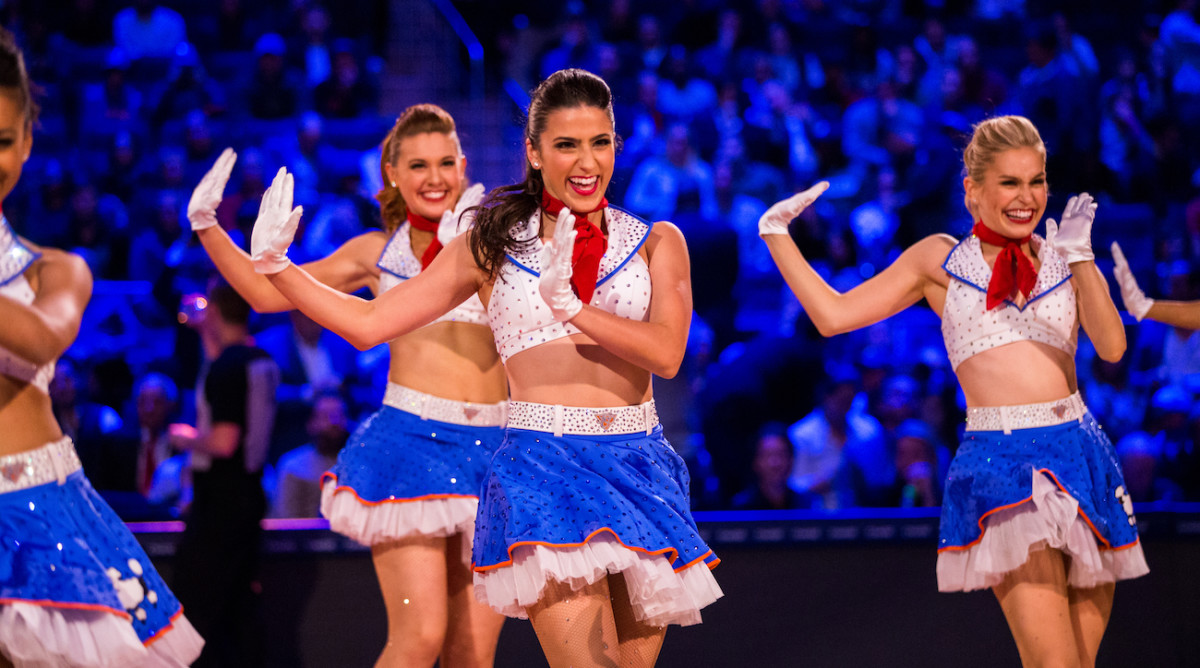Talking Engineering and Choreography With Knicks City Dancer Danielle Galipo

Danielle Galipo is one of 20 women who make up the Knicks City Dancers, the team that performs on the court at Knicks games at Madison Square Garden in New York City. Like many dancers in professional sports, Galipo also has another full-time job. She’s an engineer! She told me about both of her careers and some advice she has for young dancers.
When did your love of dancing begin?
I first started dancing when I was three years old. My mom put me in classes as soon as I could walk, and from there I continued through high school and college.
Why did you decide to become a Knicks City Dancer?
I grew up in New Jersey; I’ve always looked up to Madison Square Garden, as it’s the world’s most famous arena. Being able to perform here with other very talented girls was something I was interested in. I auditioned back in 2016 and made it for my first year. Now I’m back as a second-year veteran.
Did you prepare a lot for the current season?
Yes, absolutely. We have been rehearsing as a team since the beginning of July. Every year, auditions are at the end of June, and a bunch of girls come out. We all need to re-audition to earn our spot, so leading up to auditions you are already working really hard to stay in shape and keep your technique up so you’re prepared. Then, we needed to have all new dances for the beginning of this season (11 home games in November and three in October), so we prepped all sorts of choreography with the girls who were selected for the team this year.
How long does it take you to learn a dance?
Usually we have practice for four hours at a time, from 6 to 10 at night; we will usually learn two routines per practice. Overall, it will take us one to two hours to learn a new routine. Then, we go back and clean it and save it. We are constantly working on pieces throughout the season.
How often do you practice? What do you do during practices?
During the season, we generally have two practices a week. We will either have one or two games for the most part. It’s a pretty big commitment. The performance caliber is super high here. We want to make sure our dances are clean and precise and we’re dancing all together. We will learn a dance one day, and then we will go back to that dance several times in different practices. We will clean it up, and one of our captains will go through every count and tell us exactly what position our hands should be in and what we should be doing with our legs—make sure we all look in unison—and then we will go back to it again in a future rehearsal when we set the dance. This basically means they pick the 16 girls who are going to be doing it on the court and will put us into formations. Finally, we have a court rehearsal, when we will finalize the dance right before the game.

What’s your favorite part of being a dancer here?
My favorite part is performing at the world’s most famous arena. Madison Square Garden attracts so many people from all over the country and all over the world, and there is always such good energy in the crowd. Performing for new people every night—and with new routines, in our costumes, and all different songs—is just so much fun. And I get to do it with girls who are super supportive and very talented!
What are your dreams as a dancer, and how are they affected by your day job?
I am proud to say that this is actually one of my dreams, and I feel grateful and lucky that it has come true. I definitely have a hard time managing the schedule, but luckily where I work, it’s a 24-hour facility, so my boss is awesome and he lets me work the hours that will work with doing this as well. If that means going in super early or staying super late on a night that we don’t have a game or a practice, I’m able to work around it. I feel like I have a very unique situation, but it works out really well.
What lessons can you bring from dancing back to your day job and vice versa?
There are so many, but I think the biggest ones are teamwork and collaboration. Where I work I have to deal with a lot of different departments. I work in quality assurance, and there is production and other jobs. So just growing up in that team environment working with other girls to make our dances look really good, I carry that into my day-to-day engineering career by knowing how to work with people and how to gauge their energy and make sure we are working together toward a common goal. It is very different from a clean dance at MSG, but it is also the same.
What advice for young dancers and engineers?
Don’t limit yourself! If I told myself when I was 10 years old that I would be doing a full-time engineering job and a full-time dancing job, I would be super happy but also I wouldn’t believe it. Just set your goals high and achieve them. You can do anything you set your mind to!
This interview has been edited for length and clarity.
Photographs by (from top) Riley Neubauer; MSG Photos
